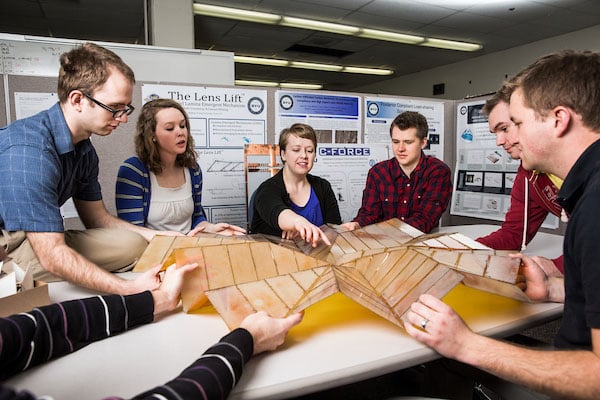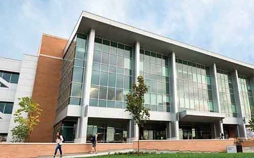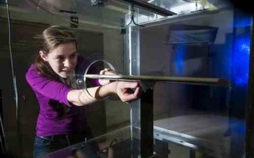Dedicated to Innovation: Engineering Building Dedication Recap
BYU’s new Engineering Building and Engineering Research Lab were 100% funded by 17,000 generous donors.
December 2017
Who would have ever thought that origami could save lives or help technology to reach outer space? Professors and students at Brigham Young University have shown that it can. Providing more experiential learning opportunities for students is what Kevin J Worthen’s Inspired Learning fundraising initiative is all about.
In 2012, a group of BYU professors received a grant to explore the seemingly distinct fields of origami and engineering.

Origami involves movement through bending and stretching instead of joints and moving parts. Shannon Zirbel, then a BYU graduate student working with NASA’s Jet Propulsion Lab, worked to design a massive solar array capable of traveling to space compacted and then unfolding. The team worked with Robert Lang, an origami expert, to see how folding could make this vision a reality. Theirsolar array expands to 10 times its size once it is deployed. This is much cheaper for NASA, as it costs less to launch smaller objects and the array absorbs much more solar energy.
In 2015, a video highlighting the array received a great deal of attention and was awarded a People’s Choice Award by an international competition sponsored by the National Science Foundations and Popular Science.
Professor Larry Howell, who mentored Zirbel on the project, said, “The most rewarding part is working with students and helping them to have these experiences. It’s different than just doing course work and doing a homework problem that tens of thousands of other students have done. It’s learning by actually doing something that has potential to make a positive difference in the world.”
And these BYU students have continued to explore uses for origami. Here are a few more of their projects:
In addition to the innovations that the students have already developed, they foresee origami leading to the invention of everything from folding phones, to shelters that can be used in emergency situations. The possibility of origami-inspired solutions in the medical, technological, and engineering fields is just beginning to unfold.
BYU’s work on origami-inspired research and development was even highlighted in a special episode of PBS’s Nova, “The Origami Revolution.” Watch a preview for the episode.
Howell explained that this research would not have been possible without the grants they received. Of the research experience, he also said, “BYU is an amazing environment to do these kinds of interesting, exciting, and creative types of projects. We have wonderful students and supportive administration.”
With the help of grants and faculty, BYU students will continue to investigate possibilities of applying origami in their studies.
Make a Gift
BYU’s new Engineering Building and Engineering Research Lab were 100% funded by 17,000 generous donors.

Roads and pavements may not light up everyone's eyes, but they changed the perspective of BYU civil engineering student Tenli Waters.

Amy Briggs finds her passion in mechanical engineering after bouncing around several majors at BYU-Idaho and then BYU. Her mentored learning opportunity then helped her towards her final career choice.